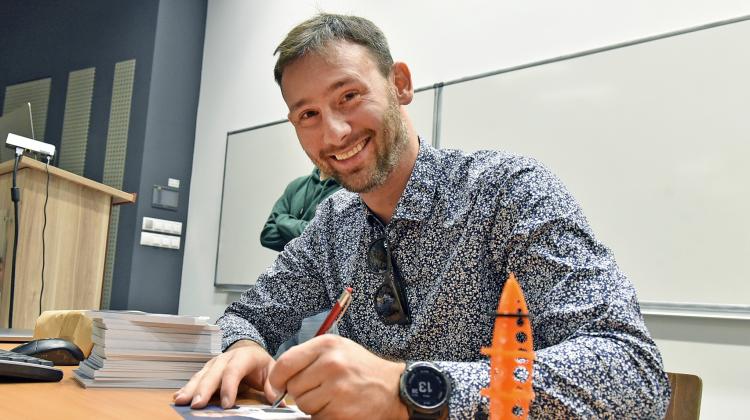Most of these questions shall remain unanswered for the next dozens of years. Unless breakthroughs in nanotechnology and nanomechanics are made. Provided that we harness new physical phenomena and use self-assembling chemical structures to make ultra-strong materials with extraordinary properties, I think that we should be able to build intergalactic space ships.
Of course, we all agree that we need to develop advanced energy storage systems for powering such vehicles, which should make them self-sufficient in the outer space. Unquestioningly, we also need to be able to remote-control them, to have the information technology for rapid image processing and transmission to Earth.
Tomorrow turns into today
Stanislaw Lem conjured up hundreds of similar futuristic visions in his novels. Today, they are slowly being brought into the real world in laboratories around the world. One of such ideas is the ultra lightweight transmission system for robotic spacecraft that is being developed in the Faculty of Mechanical Engineering of Lodz University of Technology in collaboration with the Institute of Metal Physics of the Ural Branch of the Russian Academy of Sciences, and the Slovak Academy of Sciences in Košice.
The research anticipates the emerging needs of the space industry for modern, ultra lightweight functional and structural materials, which are determined by the following economic constraints: the need to increase the range of the craft, their carrying capacity, and to reduce their fuel consumption. Consequently, with the reduction of the mass of spacecraft, the cost of sending a shipment to Earth's orbit or any planet in the Solar System will be lower (current cost: $ 10 000 per 1 kg - Russian Space Programme). That is why using steel as a functional material in similar components of spacecraft transmission system is currently highly non-viable, which is why there is intense research into ultra lightweight functional materials that meet strict mechanical criteria in cryogenic temperatures and, at the same time, have low specific weight.
At the core of the innovation developed at TUL is nanostructured aluminum alloy treated with high pressure torsion and multi-stage thermal treatment. Additionally, gradient carbon coating is deposited to reduce the coefficient of friction between the mechanical elements of the arm made from the nanocrystalline aluminum alloy. The resulting material exhibits properties similar to steel's, yet it is three times lighter than steel.
I hope that soon enough this technology will make it possible for you and your date to go star gazing on planet Venus.




